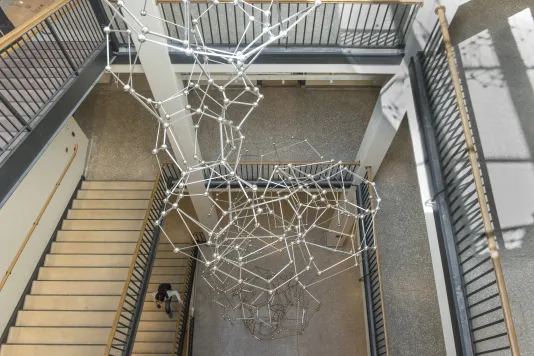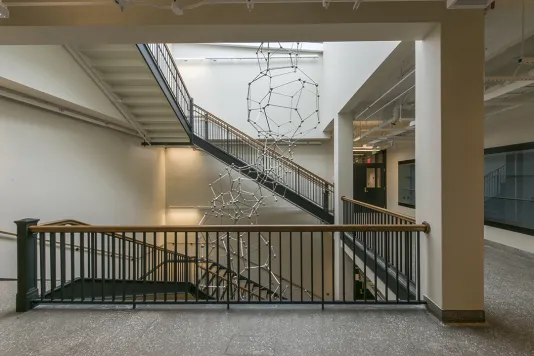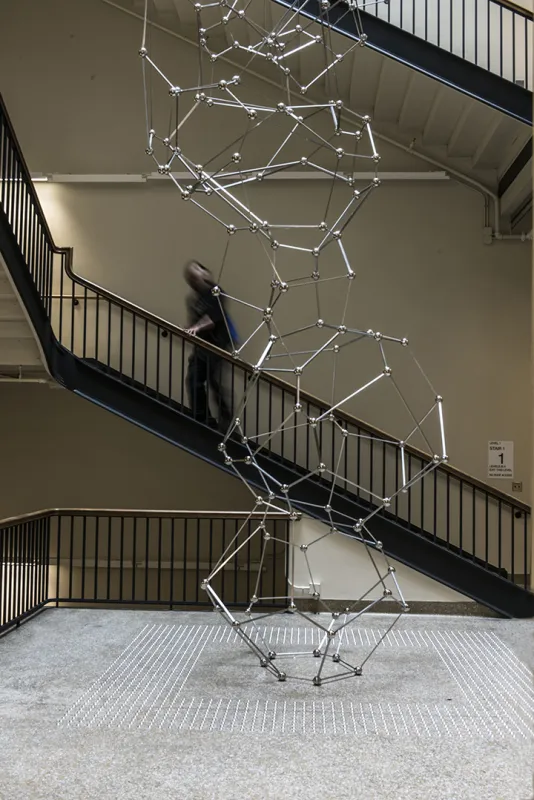Antony Gormley, Chord, 2015. Commissioned with MIT Percent-for-Art Funds. Courtesy the artist. Photo: Peter Vanderwarker
Chord, 2015

"Molecule Flavor" by Lupe Fiasco, GHOTIING MIT: Public Art
Antony Gormley’s Chord is composed of thirty-three stainless steel polyhedrons reaching from the floor of the Simons Building to the skylight four stories above.
Light passes through the open, molecule-like structures of the sculpture and reflects off the slender rods and nodes that form each unit. Although the piece seems delicate and airy, it weighs 1700 pounds.
The sculpture’s installation marked the centennial of the building, which was designed by architect William Welles Bosworth and combines the styles of ancient Greece and twentieth-century American industry. The austere staircase where Chord hangs is at the busy intersection of MIT’s Mathematics and Chemistry Departments; Gormley’s dynamic column speaks to both disciplines, evoking scientific diagrams of bonded atoms while inviting the computation of its implied volume. The uneven distribution of its irregular forms counters the regular intervals of the staircase through which it ascends.
Gormley began creating what he refers to as “cellular polyhedral sculptures” in 2008. Polyhedrons are abstract and geometric forms that occur in nature—for example, in the patterns of a turtle’s shell, or the hexagonal honeycombs of beehives. Polyhedral forms are also important in nanotechnology, serving as the architectural frames for synthetic DNA sequences. Chord, with its interplay of light and shadow, celebrates the crystalline and organic cellular structures that comprise the geometry of life.
Antony Gormley (b. 1950) was born in London. He studied art history, archeology, and anthropology at Trinity College, part of the University of Cambridge, before studying art at Central Saint Martins College of Art and Design, Goldsmiths College, and the Slade School of Fine Art, all in London. His early work explored the human form through casts and abstracted sculptures and increasingly focused on the relations between bodies and their environments. He has presented public sculptures internationally, including at the 39th Venice Biennale (1982), the 15th Sydney Biennale (2006), and Documenta 8 (1987), and within the United States at venues such as the Brooklyn Bridge Park in New York, the Philadelphia Museum of Art in Philadelphia, and the Phillips Collection in Washington, D.C.



